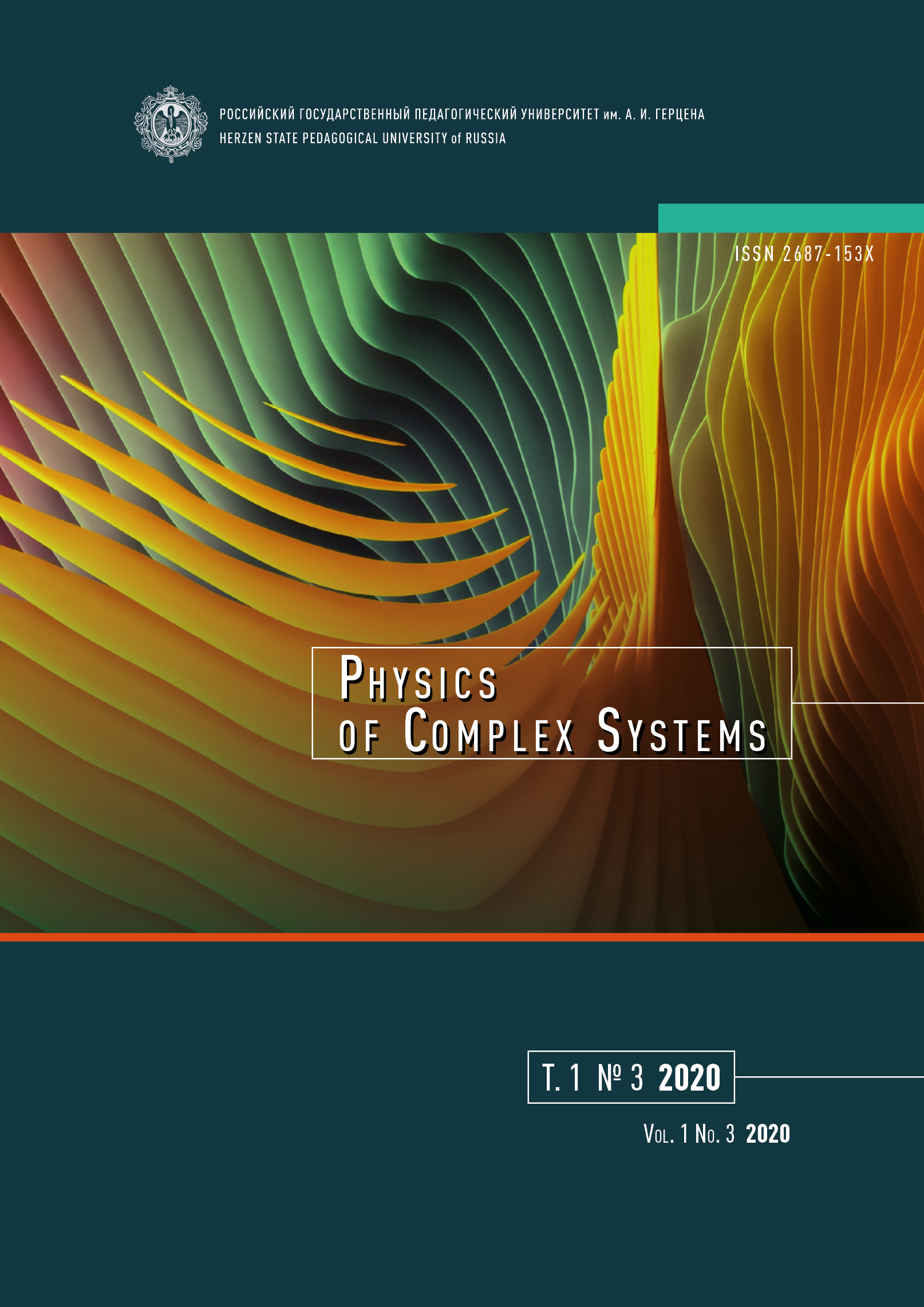Influence of particle aspect ratio and ability to aggregate on electrical conductivity of fiber-forming polymer composites
DOI:
https://doi.org/10.33910/2687-153X-2020-1-3-99-107Keywords:
polymer composites, carbon particles, fiber-forming, electrical conductivity, percolation threshold, aspect ratio, aggregateAbstract
Fiber-forming polymer composites filled with carbon nanoparticles of three types (carbon black is a spherical filler; carbon nanofibers and carbon nanotubes are anisotropic nanoparticles) were produced by melt technology. Electrical conductivity of the fiber-forming polymer composites was measured; a function of the filler concentration and the percolation thresholds were determined. It was found that an increase in the aspect ratio of carbon nanoparticles leads to a decrease in the percolation threshold. The correlation between the axial ratio, stiffness, filler concentration and electrical conductivity of the percolation cluster in fiber-forming polymer composites was analysed.
References
Efros, A. L., Shklovskii, B. I. (1976) Critical behaviour of conductivity and dielectric constant near the metal-non-metal transition threshold. Physica Status Solidi: Basic Solid State Physics, 76 (2), 475–485. DOI: 10.1002/pssb.2220760205 (In English)
Kinloch, I. A., Suhr, J., Lou, J., Young, R. J., Ajayan, P. M. (2018) Composites with carbon nanotubes and graphene: An outlook. Science, 362 (6414), 547–553. DOI: 10.1126/science.aat7439 (In English)
Kovacs, J. Z., Velagala, B. S., Schulte, K., Bauhofer, W. (2007) Two percolation thresholds in carbon nanotube epoxy composites. Composites Science and Technology, 67 (5), 922–928. DOI: 10.1016/j.compscitech.2006.02.037 (In English)
Kymakis, E., Alexandou, I., Amaratunga, G. A. J. (2002) Single-walled carbon nanotube–polymer composites: Electrical, optical and structural investigation. Synthetic Metals, 127 (1–3), 59–62. DOI: 10.1016/S0379- 6779(01)00592-6 (In English)
Li, Y.-J., Xu, M., Feng, J.-Q., Dang, Z.-M. (2006) Dielectric behavior of a metal-polymer composite with low percolation threshold. Applied Physics Letters, 89 (7), article 072902. DOI: 10.1063/1.2337157 (In English)
Matos, M. A. S., Pinho, S. T., Tagarielli, V. L. (2019) Predictions of the electrical conductivity of composites of polymers and carbon nanotubes by an artificial neural network. Scripta Materialia, 166, 117–121. DOI: 10.1016/j.scriptamat.2019.03.003 (In English)
Moskalyuk, O. A., Aleshin, A. N., Tsobkallo, E. S., Krestinin, A. V., Yudin, V. E. (2012) Electrical conductivity of polypropylene fibers with dispersed carbon fillers. Physics of the Solid State, 54 (10), 2122–2127. DOI: 10.1134/S1063783412100253 (In English)
Tarfaoui, M., El Moumen, A., Lafdi, K. (2017) Progressive damage modeling in carbon fibers/carbon nanotubes reinforced polymer composites. Composites Part B: Engineering, 112, 185–195. DOI: 10.1016/j.compositesb.2016.12.056 (In English)
Ukshe, A., Glukhov, A., Dobrovolsky, Y. (2020) Percolation model for conductivity of composites with segregation of small conductive particles on the grain boundaries. Journal of Materials Science, 55 (15), 6581–6587. (In English)
Downloads
Published
Issue
Section
License
Copyright (c) 2020 Ekaterina S. Tsobkallo, Olga A. Moskalyuk, Vladimir E. Yudin, Andrey N. Aleshin

This work is licensed under a Creative Commons Attribution-NonCommercial 4.0 International License.
The work is provided under the terms of the Public Offer and of Creative Commons public license Creative Commons Attribution 4.0 International (CC BY 4.0).
This license permits an unlimited number of users to copy and redistribute the material in any medium or format, and to remix, transform, and build upon the material for any purpose, including commercial use.
This license retains copyright for the authors but allows others to freely distribute, use, and adapt the work, on the mandatory condition that appropriate credit is given. Users must provide a correct link to the original publication in our journal, cite the authors' names, and indicate if any changes were made.
Copyright remains with the authors. The CC BY 4.0 license does not transfer rights to third parties but rather grants users prior permission for use, provided the attribution condition is met. Any use of the work will be governed by the terms of this license.







